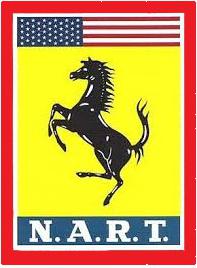

| 1962 & 1963 250 GTO's Models by Suber Factory, BBR, AMR & Redline 1/18. |
| 1962 & 1963 250 GT0's: 1963 Le Mans Model by BBR & AMR 1/43 |
|
|
|
| 1963 250 GTO Model by SUBER FACTORY 1/43. |
1963 250 GTO Model by SUBER FACTORY 1/43. |
1963 250 GTO Model by SUBER FACTORY 1/43. |
1963 250 GTO Model by SUBER FACTORY 1/43. |
To view other parts of our Ferrari collection take these links to the Ferrari Racing & Prototype Cars of the 1950's, 1960's, 1970's, 1980's to Present,
as well as the GP & F1 Cars and the ProductionSports Cars parts of our Ferrari collection.
THE TRIPLE CROWN OF ENDURANCE RACES:
THE 24 HOURS of LE MANS
THE 12 Hours of SEBRING WINNERS
THE 24 HOURS of DAYTONA WINNERS
GREAT AUTOMOTIVE MAKES:
ABARTH
ASTON MARTIN
ALFA ROMEO
AUSTIN HEALEY
BMW
CHAPARRAL
FORD GT40, MkIV & MIRAGE
LOLA
LOTUS
McLAREN
MASERATI
MERCEDES BENZ
SHELBY COBRAS, FORDS & MUSTANGS
RACING, RALLYE, SPORTS, GT & CLASSIC CARS
RACING SPORTS, GT & PROTOTYPE CARS 1945 to 1959
RACING SPORTS, GT & PROTOTYPE CARS 1960 to 1969
RACING SPORTS, GT & PROTOTYPE CARS 1970 to Current
LAND SPEED RECORD CARS
SPORTS. GT & TOURING CARS
VETERAN, CLASSIC & SPECIAL INTEREST CARS & TRUCKS
RACING SUPPORT VEHICLES AND TRANSPORTERS
DRIVER TRIBUTES:
THE OLD IRISH RACING HALL OF FAME
JUAN MANUEL FANGIO TRIBUTE
STIRLING MOSS TRIBUTE
DAN GURNEY TRIBUTE
JIM CLARK TRIBUTE
WORLD DRIVER & CONSTRUCTORS CHAMPIONS 1950 - 1985
GREAT RACING TEAMS:
ECURIE ECOSSE
GULF OIL RACING
MARTINI RACING TEAM
GROUP 44, Inc.
CUNNINGHAM RACING TEAM
BRUMOS RACING TEAM
GREAT NORTH AMERICAN RACING SERIES:
USRRC 1963 to 1968
CAN-AM SERIES 1966 - 1974
IMSA SERIES 1971 - 1998
TRANS-AM SERIES 1966 - 2013
OLD IRISH AIR FORCE:
HISTORIC AIRCRAFT
For copies of images, questions or comments about the collection to: OLD IRISH RACING
Back to: OLD IRISH RACING MODELS INDEX Home Page
Back to: OLD IRISH RACING Home Page Legal stuff: Content and images on this website are the property of Old Irish Racing and may not be used without permission. © Old Irish Racing 2018-2019
PLEASE NOTE: From 1968 into the 1990's tobacco companies sponsored many significant race cars. We don't promote tobacco use, rather we stronly discourage it. However, we do promote historical accuracy, Old Irish Racing chooses
to display models in our collection as historically accurate as possible. While seeing a tobacco advert on a car gives me no more desire to go smoke than seeing a car makes me want to go
suck on its exhaust pipe. If tobacco (or alcohol) adverts on race cars offend you, please go look at nice pictures of bunnies and kittens on another site. Thank you!